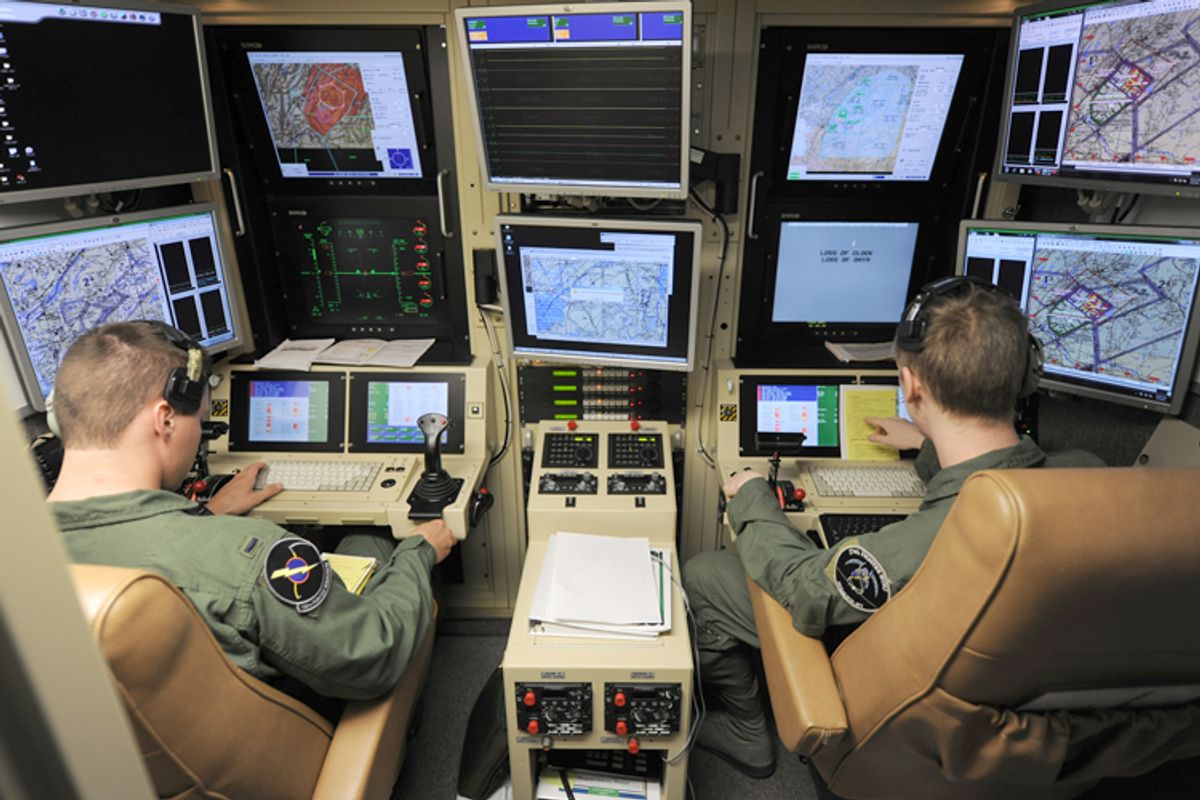The first report published in Glenn Greenwald's new online magazine, the Intercept, tells a crucial story about the military's troubling reliance on NSA data in drone strikes.
The story, by Greenwald and Jeremy Scahill, details how dependence on electronic surveillance of communications, in lieu often of any on-the-ground human intelligence work (HUMINT), has led to the wrong targets or nearby civilians dying by U.S. drone fire.
I believe a particular detail in the report deserves some further teasing out: the story of what type of person is produced as a target by electronic surveillance, and what type of person gets torn asunder by hellfire missiles. The categories I refer to here are not "terrorist" or "al-Qaida operative" or "civilian" -- although these are of course vitally misused classifications in the terrain of drone wars. I want to address an essentially philosophical problem of personhood that arises from the fusion of communications network surveillance and then drone killings.
I propose that the type of target that emerges from tracking electronic communications is essentially in a different framework of personhood than is an on-the-ground, IRL, embodied, flesh and blood drone target. The military is thus relying on incommensurate concepts of a target -- a person, even -- in carrying out these drone strikes. I submit that this is an intractable problem, with room for error inscribed in the very core of drone strikes based on NSA surveillance.
Scahill and Greenwald's story tracks how the military uses a so-called F3 system to move from electronic surveillance to a "targeted" kill. The three "F's" are "Find," "Fix" and "Finish," which each have very specific meanings in this context. Greenwald and Scahill reported:
As [a] former drone operator explains, the process of tracking and ultimately killing a targeted person is known within the military as F3: Find, Fix, Finish. “Since there’s almost zero HUMINT operations in Yemen – at least involving JSOC – every one of their strikes relies on signals and imagery for confirmation: signals being the cell phone lock, which is the ‘find’ and imagery being the ‘unblinking eye’ which is the ‘fix.’” The “finish” is the strike itself.
Now, the "find" relies on a very different idea of what forms a person than the "fix" and the "finish." The "find" is based on an amalgam of data points -- a narrowing in of networks within networks of metadata and data -- tracing calls, geolocations, messages and movements. From this surveillance activity, a subject of sorts -- the "find" -- is produced. A person, a suspect, emerges from inferences made based on swaths of communications data. But drones don't kill data networks, or nodes; they kill human bodies. The move, then, from "find" to "fix" entails a shift in frameworks of what constitutes a person -- from data to embodied flesh.
The issue at hand is that the NSA is interested in a different concept of a person than is JSOC. The NSA infers individuals and their networks by tracing communication and movement; JSOC seeks a flesh-and-blood, discreet target. Sometimes these two concepts align, but --and this is crucial -- sometimes they do not. The problem becomes intractable when only electronic surveillance is relied upon to find drone targets, because the "fix" is always underdetermined by the "find" but the relationship is treated as wholly determinate. The "person" located through electronic surveillance (the person-as-datapoint) determines what embodied person or persons fall within drone cross hairs. No other intelligence, the report informs us, is used aside from electronic surveillance; no evidence could therefore serve to upend inference from surveilled communications. It is assumed, problematically, that the subject who emerges in the "find" is wholly coextensive with the embodied person of the "fix." It's a flawed logical inference indeed, to assume (on the pain of someone's death) that identities that emerge through communications networks have their certain, stable equivalents In Real Life.
Here, then, is the heart of the problem of military reliance on NSA surveillance in seeking drone targets. Not only is room for error notable, it is philosophically unavoidable.



Shares